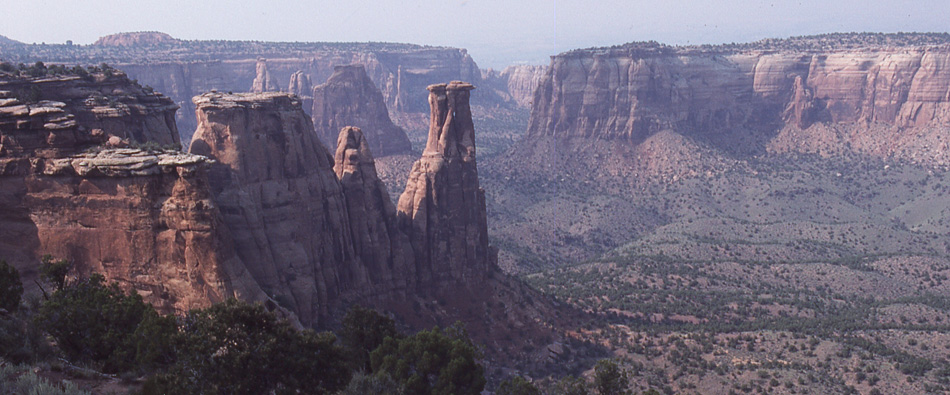
CELEBRATING THE NATIONAL PARK SERVICE CENTENNIAL • 1916-2016

Colorado National Monument
|
Parks: The Challenge of Excellence by Stewart L. Udall, Secretary of the Interior This article first appeared in Trends in Parks & Recreation, Volume 1 No. 1 - July, 1964
The park movement today is perhaps in the most dynamic period of its history. Thus, it is particularly worthwhile for this new publication, TRENDS, to ride the crest of the wave and signal the ideas and events which are broadening the park course. Increased population, increased leisure time, increased mobility, increased interest in outdoor recreation, and increased social sophistication are factors well known to parkmen. They are factors which make the job of park land management a far more complex situation than it was in 1916. As recently as five years ago, the National Park Service bore the paramount national burden of facilities for America's vacationing public. Since then a multiple-use act has been passed by Congress, making outdoor recreation an avowed purpose of the national forests. Land and people-minded states like California, Pennsylvania, New York, and Wisconsin, have approved bond issues for major park and recreation land acquisition. Impressed by the importance of these examples, Congress is currently considering the Land and Water Conservation Fund bill, which will make Federal matched funds available to all states for conservation planning, acquisition, and land development. A keystone in the endeavor to build an adequate people/land ratio is a series of proposed federal recreation areas: Tocks Island, Fire Island, Assateague, Bighorn Canyon, Oregon Dunes, and Ozark Rivers. These areas have been conceived for high-density visitation, and their proximity to population centers means that they will fulfill the recreation requirements of millions of Americans who desire to vacation outdoors. The pressing complexities of our times further necessitate additional areas where solitude can be known, where Americans can touch the slow swing of the seasons, and learn in depth the natural processes of this planet. I was impressed last September at the Nairobi meeting of the International Union for the Conservation of Nature and Natural Resources by the degree to which our world-wide conservation colleagues expect the United States to protect its wild park treasures as the heritage of all mankind.
The degree to which this country can maintain wilderness and civilization side by side will mark our success as conservation planners. We have lost all save a few fragments of the Indiana Dunes. We have a Redwood remnant in the State of California, where by cutting and pasting and praying we may yet save a national park opportunity from the leveling tread of civilization—if we are lucky. There will be but a few more great national parks, and the larger task ahead will be that of preserving these treasures for posterity. We are stepping into a new era of creative park management. The park experience is essentially a qualitative experience, and park managers are finding that their domain spans the most imaginative concepts of architectural design and spacial utilization, with the deepest insights in the realms of ecology. The challenge of excellence is on all sides. Parkmen are challenged in the taste and design of campgrounds, facilities, and roads they construct, and are challenged more fundamentally in cases by whether to construct at all. Increasingly, it is being found that arrangements with complimentary agencies outside park boundaries can provide requisite facility expansion. Scenic and conservation easements and other voluntary devices are enabling parks to radiate an enjoyment of nature in more and more communities every day. As a people, Americans have become obsessed with the sedentary mobility and speed that their automobiles provide, and in terms of park visitation this attitude often limits the outdoor experience to a surface glance. The Long Range Study of the National Park Service emphasizes that while adequate provision will be made for automobiles, a greater encouragement will be given visitors to leave their cars and enjoy a sojourn in nature, away from the roadway. The importance of parks to science is growing as eminent scientists from all over the world recognize that these reserves are the ultimate stronghold of unmodified life processes. Science is making an increasingly important contribution to park management as the results of basic research are applied in developmental decisions. Of all professions, the park profession has a chance to deal in superlatives. Its leaders are taste-makers, and they must be ambassadors of aesthetics, of good land use, and of national conservation attitudes. 
| |||

